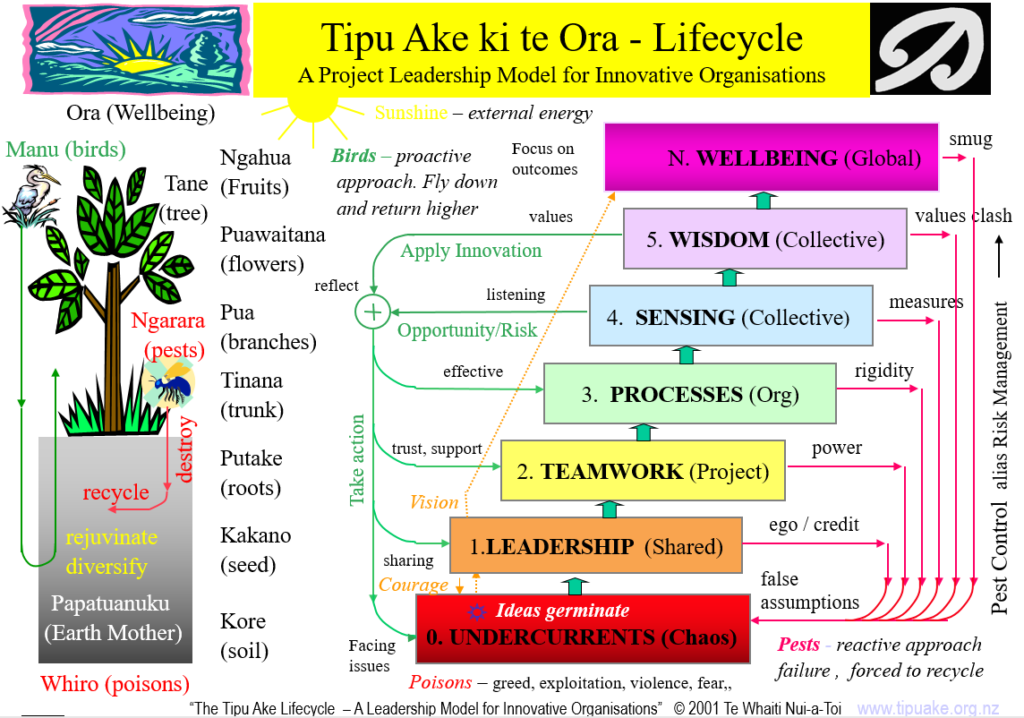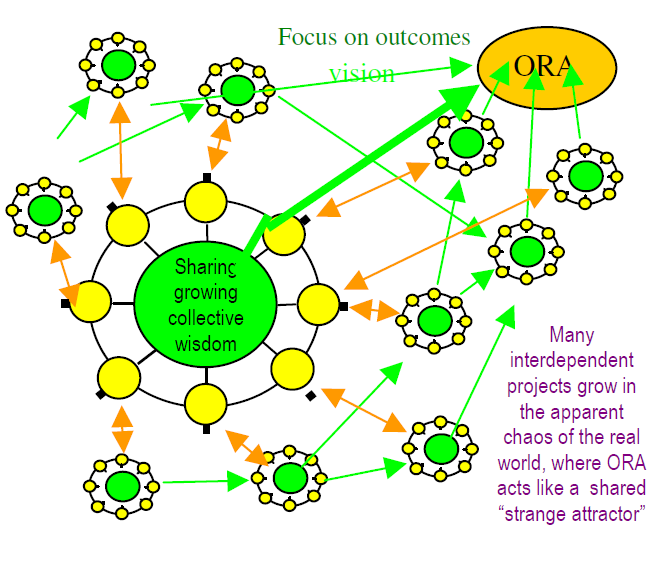In a major series launch of thealphaswarmer_frameworks series, I am presenting an organisational capability development and project leadership model that if embraced wholeheartedly, will result in rapid levels of innovation and the reciprocity to emergent strategy within, across and beyond enterprises. For years business leaders have struggled to induce coherence internally whilst battling the emergence of factions, disaggregation of visions, failed strategic agendas and ultimately lacklustre innovation strategy due to the presence of counterproductive change agents whom are vested with the mandate for transformational change but cannot achieve it due to the existence of silos and bottlenecks which prevent action focused win-win outcomes to drive vision. Industries have fragmented and strategic groups have formed with juxtaposing directives to deliver growth and business model innovation. Within this domain there has also been a yearning for a fusion of the visionaries who embrace strategy with the operators who get stuff done. Despite the intention, a study done by the strategy consulting division of PwC found that only 8% of company leaders were said to excel at both strategy and execution. The established notion here is the view that strategy can be dreamed at the top and everyone below will simply follow. This is not always true which is why I put forward an organisational model that will not only allow strategy to be emergent but also induce an agile like response across all areas in the enterprise. The days of keeping strategy and execution as separate topics are ending. As purported by a HBR article “we need leaders that can create big promises to customers,. And help their organisational deliver on those promises”.
This article outlines the state of business models, the principals required to emerge in a networked economy and introduces a model that can be embraced by any type of organisation to capture and leverage distributed intelligence amongst any player in the enterprise.
“”A leader’s job is not to do the work for others, it’s to help others figure out how to do it themselves, to get things done, and to succeed beyond what they thought possible.
—Simon Sinek, author, Start with Why
Leadership and management go through multiple planning cycles, phases of engineering and reorganisation but yet these concurrent efforts are still failing to drive breakthrough innovative outcomes. The precepts of visionary leadership and effective strategy execution are inextricably linked. As much as we want to look up to a single leader to take the helm; in todays networked economy its critical that shared leadership and emergent strategy form the nexus of organisational change and innovation. Just like the gears of a manual car, everyone needs to traverse first, second, third, fourth and fifth gear to conceive, develop, augment and deliver value. The value chain itself needs to have contribution from all players in the system whom are not only inspired but operating more like a soccer team where anyone can take the ball and score the goal. By doing so, primary and support activities leverage the gamut of internal and external organisational resources effectively and nullifies the propensity for any disconnects between satisfying customer requirements, product and service engineering and internal operations. When this is achieved, you are driving an innovation imperative on the business model.
“”Entrepreneurial business favors the open mind. It favours people whose optimism drives them to prepare for many possible futures, pretty much purely for the joy of doing so””
. —Richard Branson, The Virgin Group
Defining the business model to understand operating is context and is implicitly important here as this then enables a holistic evaluation of the mechanics in the enterprise that is delivering value add. In the networked economy, nearly all organisations can be classified into one of four business models and whilst the term can have many meanings; we allude it back to the mechanics of how an organisation creates value. The business model categorisation framework is the first point of reference for leadership.Nearly all organisations can be classified into one of the four models below. I call these the business model categorisation framework and it is as such:
Asset builders deliver value through the use of physical goods. These companies make, market, distribute, sell, and lease physical things.
Service providers deliver value through skilled people. These companies hire and develop workers who provide services to customers for which they charge.
Technology creators deliver value through ideas. These companies develop and sell intellectual property, such as software, analytics, pharmaceuticals, and biotechnology.
Network orchestrators deliver value through connectivity. These companies create a platform that participants use to interact or transact with the many other members of the network. They may sell products, build relationships, share advice, give reviews, collaborate, and more.
Once the operating context is understood, the next step is to acknowledge that traditional business leadership models are diametrical contrasts to those that are networked based. This then sets the mindset embracing and articulating the signals of change that required to catalyse transformation in any enterprise. Simply put, here are the key tenets between the traditional versus the network:
- Traditional leaders ask what value their firm can provide.
- Network leaders ask what value their customers and other networks have to offer.
- Traditional leaders think the goal is to sell more products to customers.
- Network leaders see the value in customer co-creation, advocacy, and sharing.
- Traditional leaders think they’re operating at full capacity.
- Network leaders see the world differently and full of additional potential.
So how do you catalyse this directive in your organisation?
This search for a holistic and dynamic learning model has been relentlessly pursued in the corporate world through the implementation of a tapestry of processes, systems and people capability which are collectively focused on nurturing organisational capability but which are in effect failing and nullifying evolution due to the presence of diverging cultures, hidden agendas, non-cooperative agents and missed opportunities for intra and extra company collaboration. By negating the presence of these forces, higher level executives are blind to what is happening in the front line and this creates an unintended domino effect into the entire organisational system, transpiring through missed project scopes and deadlines, failed product launches, cannibalisation in the wrong ways and a disconnect of innovative culture. Whilst there might be an agenda for encouraging customer and employee contributions into the strategic, operational and tactical plans of the enterprise; its often difficult to monitor the throughputs discerningly as players in the system often operate in silos and are disconnected with key change agent. Every participant in the enterprise can offer invaluable insights that should be channeled through a mechanism that identifies, develops and formulates an innovative directive that enhances the firms value delivery (internally and externally). The enterprise that wishes to innovative in the current context needs to firstly embrace the ten network imperative principals.
The ten principles are:
- Create digital capabilities
- Invest in intangible assets
- Actively allocate your capital
- Lead through co-creation
- Invite your customers to co-create
- Focus on subscriptions, not transactions
- Embrace the freelance movement
- Integrate big data
- Choose leaders who represent your customers
- Open your mind to new possibilities
To delineate this and transpose it into a practical operating context, we delve deep into living systems theory and project a framework which is rooted on the didactic principles of knowledge sharing, trust, collaboration, teamwork and emergent driven decision making. Altogether, listening is a core tenet here as well as trust and respect for ideas. An action focused model not only nurtures distributed intelligence but also allows for emergent strategy to formulate in light of contextually relevant insights that would otherwise be absent.
The model is outlined below and is a poignant point of reference for all individuals in any enterprise. Here, you are internalising the network imperative principals from the inside whilst setting a mindset for innovation and growth whilst inducing self organising interactions amongst agents towards a sweet spot of collaboration.


Ultimately here you are inducing self organisation. Aggregation firstly occurs as it refers to the fact that collections or groupings display properties that are more than the sum of their parts. Small increments of change can cause enormous and unexpected threshold outcomes, which are non-linear but which induce diversity as a measure of variety. The more diverse an organisation, the more fit and adaptable it is. At the end of the day, companies that engage and evolve will retain and grow and those who operate in silo’d thinking will surely fail amidst the forces of competition, technological change and the rise of the knowledge worker. The framework presented herein is a logical, commonsensical reference point for any leader, manager or employee wishing to take it up to higher management.


